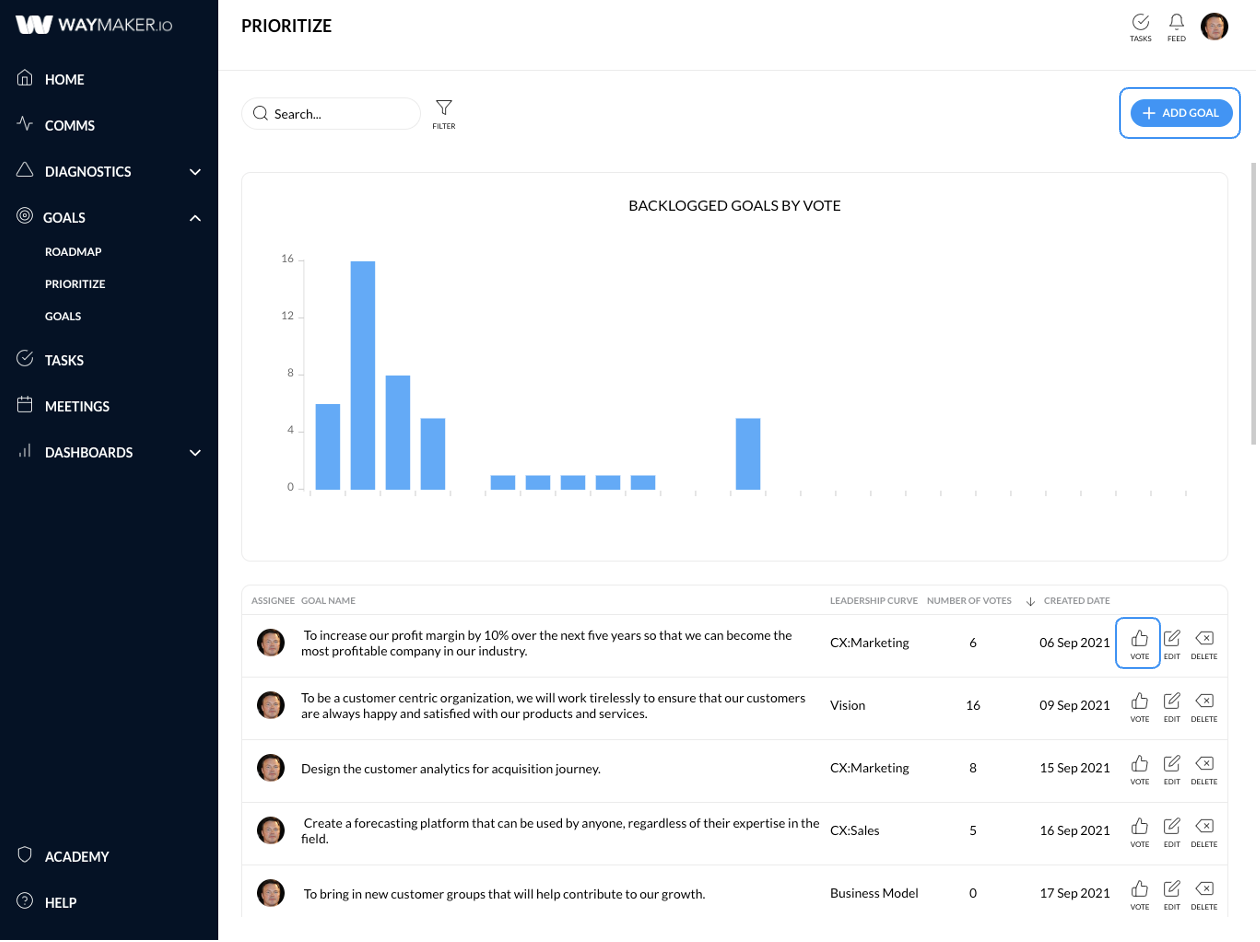Learn how to build a backlog of ideas and prioritize goals, outcomes, or tasks in a retrospective or planning session.
The prioritize tool is found in the Goals module and exists to turn a backlog of ideas into a set a prioritized set of actions.
Learning outcomes:
What is a backlog
A backlog in waymaker is a list of ideas that have been added as goals, but the idea has not yet been prioritized or committed. As a team, you will build your backlog as you work through the results of a diagnostic and follow the seven questions workshop.
If you already have a list of ideas that could become goals, you should create them as a goal with the status of backlog. The best place to do this is on the roadmap or prioritize module.
What is the prioritize module?
On the Prioritize module, you’ll see a bar chart and the list of all goals that have a status of backlog. These are all the ideas that have been added to the backlog but not been prioritized or turned into actionable goals yet. The bar chart displays the number of votes each backlog goal has received.
The prioritize module is where the team should come to goal storm and plan the roadmap for the next period, be that a quarter, half or year. You can add goals and vote on them. The idea being that the 1, 2 or 3 goals with the most votes become the focus for the organisation, the milestone goals.
How to add and vote for a goal
To add a goal, click the add goal button. And to vote for a goal, click the vote button in line with the goal.

Each member of team can vote on the goals they believe will deliver the most value to the organisation, if delivered, in the next quarter, half, or year. The chart at the top of the page will update in real-time as the team begins the voting process.
We’re not saying you should always prioritize the 1, 2, or 3 goals with the most votes.
Once everyone has voted, you should complete a group discussion to understand why each person voted the way they did. This can surface information that has not been considered previously or was unknown to others in the group. More importantly though, the discussion creates alignment within the team on what matters most.
And alignment within an organisation must not be underestimated. An aligned team, working with the same purpose, towards a shared goal, is a powerful and valuable thing.
